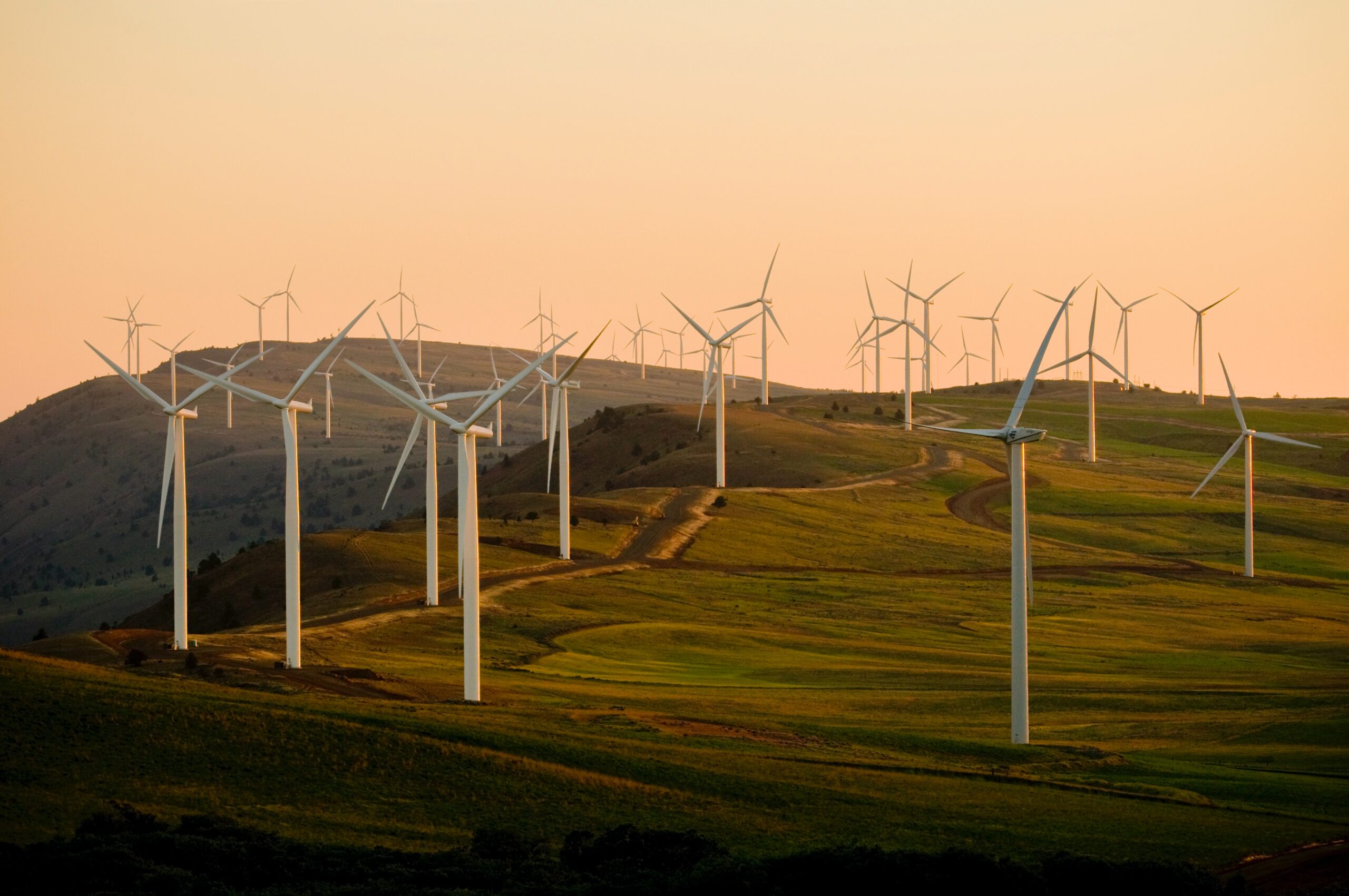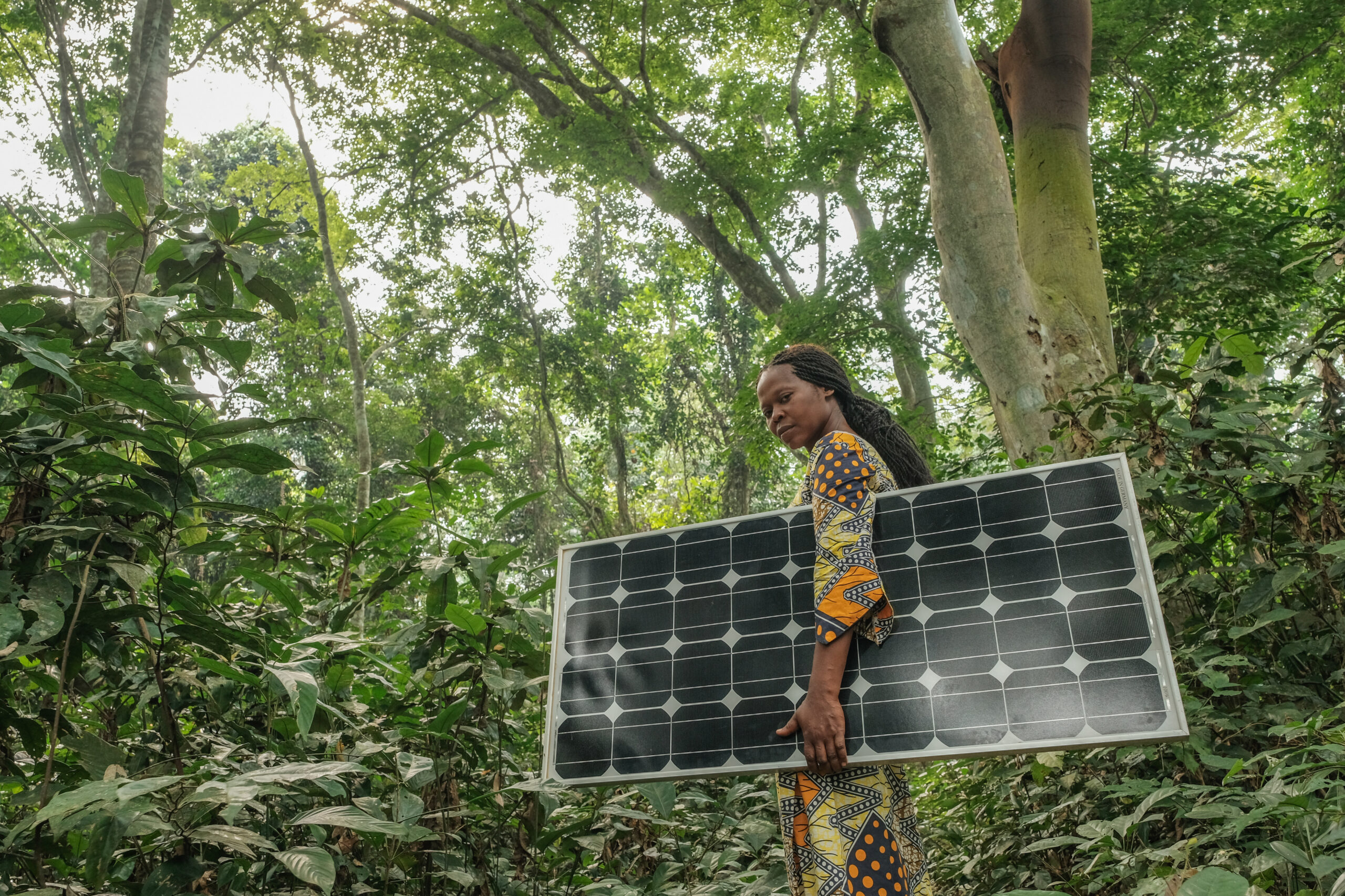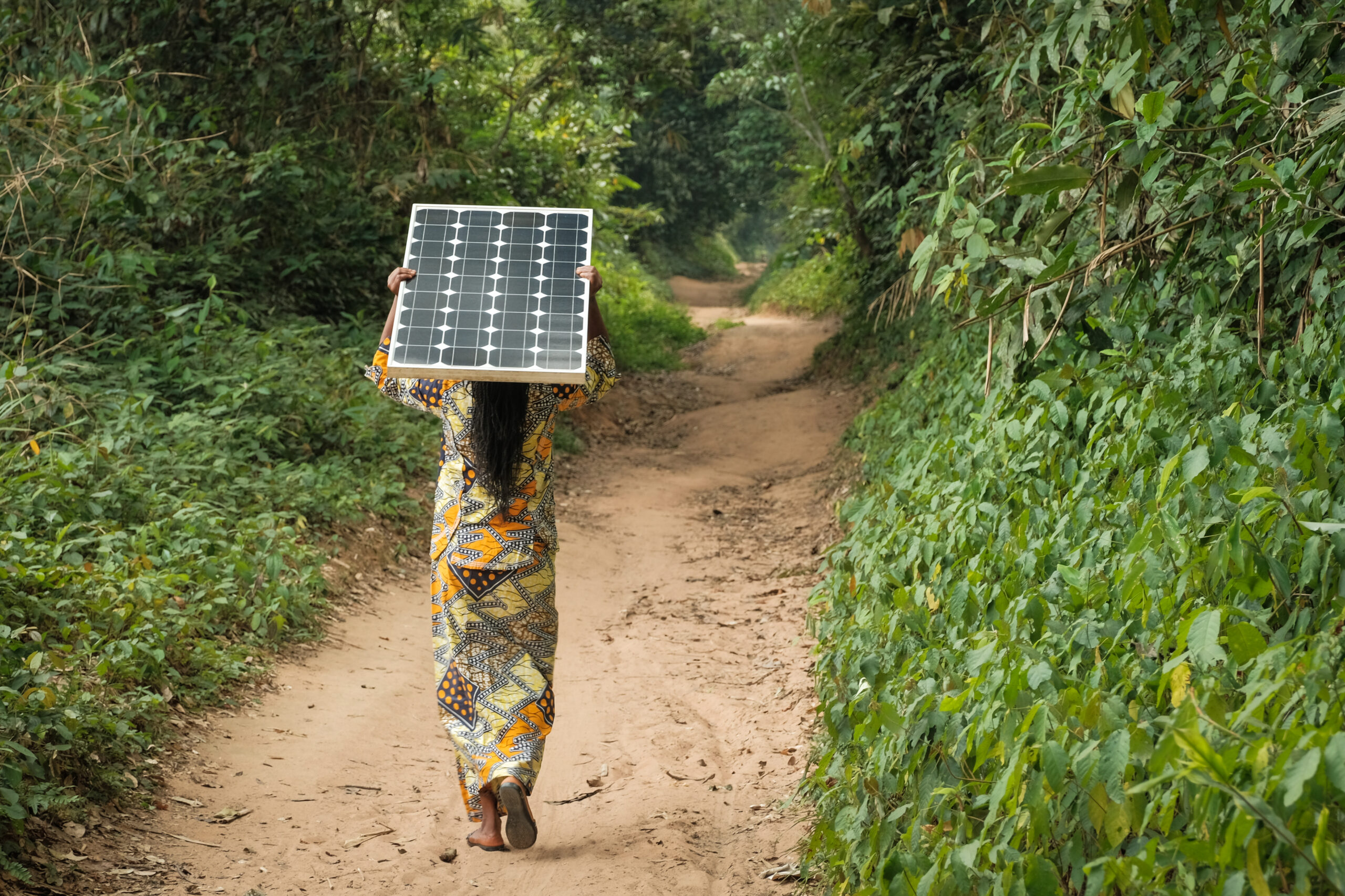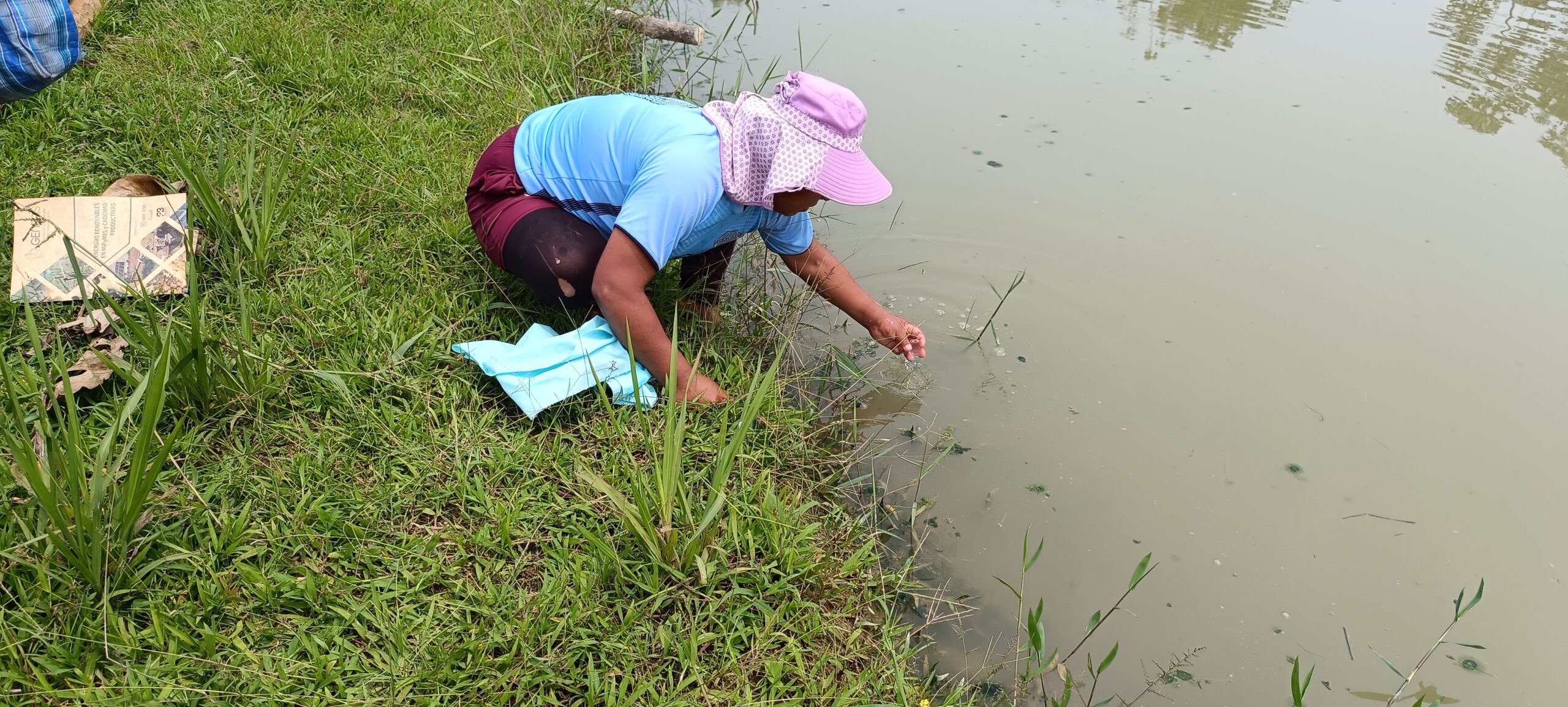'Photo by American Public Power Association on Unsplash

Briefing Paper: Resistance to Clean Energy Transitions in Low- and Middle-Income Countries
22 October 2024
This rapid summary of evidence was prepared by the Institute of Development Studies (IDS) as a background briefing paper to inform a panel event and discussion: ‘Opposition and Resistance to Clean Energy Transition’ (24 October 2024). IDS has partnered with the International Development Research Centre (IDRC) to provide 12 research projects, funded through their Clean Energy for Development: A Call to Action (CEDCA) initiative, with knowledge translation and communications support. CEDCA is generating evidence to inform public policy reforms and innovations in support of a transformative clean energy transition where women and youth can play a key role in greening energy through micro, small and medium-sized enterprises.
This paper draws upon academic and grey literature identified through a search of Google and Google Scholar and may be used to understand the topic better before embarking on a more in-depth research project or to inform events and dialogues. This is not a systematic evidence synthesis or literature review.
CITATION
Zaidan, M. and Georgalakis, J. (2024) Resistance to Clean Energy Transitions in Low- and Middle-Income Countries, CEDCA Briefing Paper 1, Brighton: Institute of Development Studies, DOI: 10.19088/CEDCA.2024.001
Summary
To view and download this report in a pdf format, please click here.
This rapid summary of evidence was prepared by the Institute of Development Studies (IDS) as a background briefing paper to inform a panel event and discussion: ‘Opposition and Resistance to Clean Energy Transition’ (24 October 2024). IDS has partnered with the International Development Research Centre (IDRC) to provide 12 research projects, funded through their Clean Energy for Development: A Call to Action (CEDCA) initiative, with knowledge translation and communications support. CEDCA is generating evidence to inform public policy reforms and innovations in support of a transformative clean energy transition where women and youth can play a key role in greening energy through micro, small and medium-sized enterprises.
This paper draws upon academic and grey literature identified through a search of Google and Google Scholar and may be used to understand the topic better before embarking on a more in-depth research project or to inform events and dialogues. This is not a systematic evidence synthesis or literature review.
Introduction
Although switching from fossil fuels to clean energy has proven positive economic, social, and environmental outcomes (Esposito 2021; Way et al. 2022), opposition to transition continues to mount. Across Europe and North America, clean transition plans have faced serious pushback from social movements, lobbyists, and pressure groups. Most visible of these groups in the West is perhaps the ‘yellow vests’ movement in France. Across the European Union, farmers and industrial groups have similarly campaigned for the European Union to pause plans for greater regulation of high-emission sectors (Malingre 2024). Climate change mitigation is similarly derided in parts of the United States (US). Former US President, Donald Trump, who in his first term withdrew US support from the Paris Accords, now promises to make America the ‘Number One Producer of Oil and Natural Gas’ by ‘terminating the Socialist Green New Deal’ (GOP 2024).
Yet what of movements and groups opposing clean energy transitions in low- and middle-income countries (LMICs)? These countries face unique fiscal and political challenges that threaten their transitions. To better understand these challenges, it is crucial to explore the specific forms of resistance that obstruct clean energy transitions in LMICs.
In the following sections, this paper explores some of the specific forms of resistance that hinder the adoption of clean energy in LMICs. First, we examine some of the financial and institutional barriers that make renewable energy projects less appealing to LMICs compared to traditional fossil fuel infrastructure. We will then consider how existing power structures, vested interests, and political economies built around oil and coal complicate the energy transition. Finally, we will address community-level opposition, where local populations contest green energy projects, often due to economic, environmental, or social concerns.
Fiscal and institutional blockages to transition
The most glaring obstacle to wider adoption of clean energy is the high start-up cost of renewable energy programmes. According to the International Energy Agency (IEA), investments in the LMIC clean energy sector need to reach over US$1tn by the end of this decade to put the world on track to net zero (IEA 2021: 14). McKinsey & Company, by omparison, estimate a total of US$275tn of spending between 2021 and 2050 (Krishnan et al. 2022: 5).
Despite the glaring need, the unrolling of green transition plans has been the purview of high-income nations. According to the IEA’s World Energy Outlook 2023, a disproportionately low share of clean energy investment is reaching developing economies (IEA 2023: 88). Emerging and LMIC economies receive less than 20 per cent of all clean energy investments, despite accounting for over 60 per cent of the global population. This discrepancy is concerning, as developing countries are predicted to see the greatest share of increase in energy consumption over the coming decades (Li, Zhang and Li 2022).1
Renewable energy production is capital intensive, requiring high input costs that many LMICs struggle to accumulate. The Covid-19 pandemic and the impact of the war on Ukraine led to financial tightening across advanced economies, which in turn led to decreases in the aid and grants earmarked for LMICs, and a rise in interest rates on sovereign and corporate debts of LMICs (Justino and Saavedra-Lux 2024). As such, the United Nations Conference on Trade and Development estimates that 60 per cent of low-income countries and 30 per cent of middle-income countries are either currently in, or close to, debt distress (UNCTAD 2023: 7). As LMICs face greater fiscal burdens, investment in high upfront cost projects that are less amenable to the capture of political rent become less attractive choices for political elites. As such, the current state of the renewable energy market in LMICs, except China and India, is largely nascent.
Emerging economies and LMICs occupy different roles within the global energy market configuration. The rush to a lower-emission economy in the global North led to the pursuit of critical minerals. These minerals are crucial for the manufacturing of permanent magnets used in new wind turbines and electric vehicles. China and Africa both have substantial reserves, although China controls an overwhelming part (85 per cent) of the processing and separation process (Liu et al. 2023). The processing and separation process is environmentally destructive. According to the Chinese Society of Renewable Earth Elements, refining one tonne of rare earth elements generates around 75 cubic metres of acidic waste water, and one tonne of radioactive waste residue (Depraiter and Goutte 2023). The large environmental impact can reverberate on communities who depend on land for livelihoods, such as farmers and miners. LMICs, unable to invest in sophisticated manufacturing renewable technology, are poised to remain either extractive or refining zones within the global supply chain for rare earth minerals. This leads some scholars to depict them as possible ‘Sacrifice Zones’ for the purposes of Just Transition (British Academy 2022).
Within LMICs, electricity sectors struggle to provide universal access, much less any renewable energy production on top of that. In an assessment of the constraints to renewable energy investments in Kenya and Ghana, Ana Pueyo reveals the following:
In Kenya, despite a plethora of regulatory incentives, private investors faced trouble with high transmission costs due to the instability of the electricity grid and the lack of state investment in its upkeep. For example, the rapid introduction of wind power energy in Kenya overwhelmed the grid system, leading to opposition from grid managers and central government decision makers.
(Pueyo 2018: 92–93)
In Ghana, a country with significant sovereign debt, interest rates on loans for private investors were prohibitively high while mandated tariffs were very high. Private investments struggle to introduce renewable energy in countries where state regulatory support and investment are missing.
The power and politics of unclean energy
These barriers to the adoption of renewable energy in LMICs are underpinned by power structures that produce a passive resistance or reluctance from governing institutions to invest in new technologies. Existing fossil fuel power generation has existed for decades. Carbon-heavy power generation infrastructure is readily available and well-developed across the world, and their expansion is more straightforward than the introduction of new sources. As such, oil and coal have become dependable commodities for state elites in LMICs. These elites have mastered means of extracting economic and political rent from such projects, and have for decades developed either their domestic supply of coal and oil or struck long-running trade deals. As such, while many LMICs have issued renewable energy plans and commitments, there is a lag in actual implementation (IEA 2023: 160).
State elites are not the only group that resist renewable energy programmes. In the case of Lebanon, private providers of electricity are equally culpable in maintaining what Peter Newell calls the ‘incumbency’ of fossil fuel power (Newell and Johnstone 2018). Private power generators in Lebanon use diesel fuel to maintain electricity production for residents across the country. The power supplied covers the shortages of energy supply from the government’s line. Both state failure to invest in a stronger power grid and the private generators’ monopoly on informal power supply have worked to maintain Lebanon in an energy shortage stasis.
In many cases, the benefits of renewable energy may not be perceived by ruling elites and other vested interests as valuable enough to abandon existing fossil fuel resources. This is especially true for countries with extensive oil deposits. In one study outlining challenges to clean energy in Central Asian countries, the obstacles are divided into three: political barriers, such as the lack of political support, regulatory frameworks, and the influence of traditional energy producers; economic barriers, such as limited funding for the high upfront costs and the relative cheapness of fossil energy; and sociocultural barriers, such as the limited public awareness and lack of education on climate change. Traditional energy companies in the region, such as BP, Lukoil and Gazprom, resist the adoption of renewables, preferring cheaper sources and dominating the energy market (Baikushikova and Temirgali 2023). In this context of power structures and vested interests, there is little incentive for these countries to invest in greater clean energy capacity when the benefits to the states and their private sector partners remain unclear.
The power and politics of making hard fiscal choices around the introduction of renewable energy sources can appear irresolvable. The case of Tanzania is instructive of the challenge. Traditionally, Tanzania’s electricity supply was dominated by hydroelectric power. The decline in rainfall and low maintenance of hydropower generators has contributed to a surging appetite for fossil fuels, specifically coal. This is in part due to the country’s large reserves of coal, estimated at 1.5bn tonnes as of 2017 (Jacob 2017: 346). The affordability and abundance of coal is made more attractive by the possibilities of rent extraction from coal projects: these include foreign direct investments, taxes, and royalties which accrue to national and private coal mining and power companies owned or controlled by the local elites (Jacob 2017: 351). Tanzania is not exceptional in this regard: LMICs host 89 per cent of the world’s global coal-fired power generation. Their abandonment will be a cost to many countries.
Community opposition due to threats to livelihoods
When states do pursue clean energy programmes, difficulties remain at the stage of community engagement. According to a systematic study of public perception of low-carbon technologies, people react negatively to projects that cause substantial changes to their local landscape (Peterson, Stephens and Wilson 2015: 3). While people in high-income nations may protest against aesthetically displeasing wind and solar farms, objections to those in low-income countries are usually tied to livelihoods. For example, LMICs tend to have a higher rate of their population employed in the agricultural sector. Therefore, wind and solar farms that take over swathes of farmland are commonly perceived a serious threat to people’s material wellbeing.
For example, in 2009, Enercon India, a multinational energy company, started building a wind power project on 192 acres of forest land. The construction efforts contradicted various Indian environmental zoning laws and Supreme Court orders. Farmers fiercely resisted the project due to its fundamental conflict with their source of livelihood, such as the dumping of construction waste causing landslides (Lakhanpal 2019). Similarly, the Moroccan Agency for Sustainable Energy (MASEN) built their Noor Ouarzazate solar project on common land belonging to a herder community of Amazigh. Although MASEN and its corporate social responsibility arm were poised to pay the residents of the region compensation, the money was locked up in a Ministry of Interior fund (Ryser 2019). In Argentina, a biofuel production company faced opposition from residents due to complaints about the environmental impact of the plant on local communities. The plant was developed without public participation or consultation (Lehmann and Tittor 2023: 186) and residents organised several strategies against the expansion of the plant that ranged from commissioning studies to chaining themselves to the Córdoba town hall. Nonetheless, the factory was able to withstand local opposition, continuing its manufacturing and even expanding exports to foreign markets.
Conclusion
Different challenges, obstacles, and forms of resistance to clean energy programmes are seen across LMICs. These range from outright civil protests to more structural impediments enacted by the state, elites, and vested interests who support and benefit from the cheap flow of fossil fuels. The shape and depth of the challenges vary based on a country’s geography, resource endowment, economy, and strength of its civil society. China and India, two countries whose manufacturing capacities are comparable to that of advanced economies of Europe and North America, exhibit more resistance from the community level. In other contexts, the most challenging resistance may come from powerful actors in the state and state-linked institutions.
The global push for clean energy transitions faces multifaceted challenges, varying significantly between high-income nations and their low- and middleincome counterparts. While Western countries encounter resistance from social movements and entrenched political interests, in LMICs the barriers also include strained structural and financial obstacles. High start-up costs, fiscal constraints, and the predominance of fossil fuel infrastructure all undermine the perceived value of renewable energy in these areas, compounded by geopolitical dynamics surrounding the extraction and processing of critical minerals. Furthermore, community-level opposition rooted in concerns over livelihood and local ecological impacts reflect the need for inclusive energy production strategies.
References
Baikushikova, G. and Temirgali, Z. (2023) ‘The Factors Hindering the Effective Development of «Green Energy» in Central Asian Countries’, Scientific Collection «InterConf» 148: 60–68 (accessed 14 October 2024)
British Academy (2022) Rare Earth Elements, Global Inequalities and the ‘Just Transition’, London: The British Academy, DOI: 10.5871/just-transitions-s-i/M-S (accessed 14 October 2024)
Depraiter, L. and Goutte, S. (2023) ‘The Role and Challenges of Rare Earths in the Energy Transition’, Resources Policy 86.Part B: 104137, DOI: 10.1016/j.resourpol.2023.104137 (accessed 14 October 2024)
Esposito, D. (2021) ‘Studies Converge on Benefits of a Rapid Clean Energy Transition’, Brief, San Fransisco CA: Energy Innovation Policy & Technology (accessed 14 October 2024)
GOP (2024) 2024 GOP Platform: Make America Great Again!, Republican Party Platform (accessed 14 October 2024)
IEA (2023) World Energy Outlook 2023, France: International Energy Agency (accessed 14 October 2024)
IEA (2021) Financing Clean Energy Transitions in Emerging and Developing Economies, World Energy Investment 2021 Special Report, France: International Energy Agency (accessed 14 October 2024)
Jacob, T. (2017) ‘Competing Energy Narratives in Tanzania: Towards the Political Economy of Coal’, African Affairs 116.463: 341–53, DOI: 10.1093/afraf/adx002 (accessed 14 October 2024)
Justino, P. and Saavedra-Lux, L. (2024) ‘Development Aid Cuts Will Hit Fragile Countries Hard, Could Fuel Violent Conflict’, United Nations University, 21 September (accessed 14 October 2024)
Krishnan, M. et al. (2022) The Net-Zero Transition: What it Would Cost, What it Could Bring, McKinsey & Company (accessed 14 October 2024)
Lakhanpal, S. (2019) ‘Contesting Renewable Energy in the Global South: A Case-Study of Local Opposition to a Wind Power Project in the Western Ghats of India’, Environmental Development 30: 51–60, DOI: 10.1016/j.envdev.2019.02.002 (accessed 14 October 2024)
Lehmann, R. and Tittor, A. (2023) ‘Contested Renewable Energy Projects in Latin America: Bridging Frameworks of Justice to Understand “Triple Inequalities of Decarbonisation Policies” ’, Journal of Environmental Policy and Planning 25.2: 182–93, DOI:10.1080/1523908X.2021.2000381 (accessed 14 October 2024)
Li, F.; Zhang, J. and Li, X. (2022) ‘Research on Supporting Developing Countries to Achieve Green Development Transition: Based on the Perspective of Renewable Energy and Foreign Direct Investment’, Journal of Cleaner Production 372: 133726, DOI: 10.1016/j.jclepro.2022.133726 (accessed 14 October 2024)
Liu, S-L. et al. (2023) ‘Global Rare Earth Elements Projects: New Developments and Supply Chains’, Ore Geology Reviews 157: 105428, DOI: 10.1016/j.oregeorev.2023.105428 (accessed 14 October 2024)
Malingre, V. (2024) ‘Europe’s Green Deal is Attacked on All Sides’, Le Monde, 29 January (accessed 14 October 2024)
Newell, P. and Johnstone, P. (2018) ‘The Political Economy of Incumbency: Fossil Fuel Subsidies in Global and Historical Context’, in J. Skovgaard and H. van Asselt (eds), The Politics of Fossil Fuel Subsidies and Their Reform, Cambridge: Cambridge University Press, DOI: 10.1017/9781108241946.006 (accessed 14 October 2024)
Peterson, T.R.; Stephens, J.C. and Wilson, E.J. (2015) ‘Public Perception of and Engagement with Emerging Low-Carbon Energy Technologies: A Literature Review’, MRS Energy and Sustainability 2.11, DOI: 10.1557/mre.2015.12 (accessed 14 October 2024)
Pueyo, A. (2018) ‘What Constrains Renewable Energy Investment in Sub-Saharan Africa? A Comparison of Kenya and Ghana’, World Development 109: 85–100, DOI: 10.1016/j.worlddev.2018.04.008 (accessed 14 October 2024)
Ryser, S. (2019) ‘The Anti-Politics Machine of Green Energy Development: The Moroccan Solar Project in Ouarzazate and its Impact on Gendered Local Communities’, Land 8.6: 100, DOI: 10.3390/land8060100 (accessed 14 October 2024)
Shuo, L. (2023) ‘Is China Really Leading the Clean Energy Revolution? Not Exactly’, The Guardian, 6 July (accessed 14 October 2024)
UNCTAD (2023) Transition to a Clean Energy Growth Model: Challenges, Opportunities and Solutions, Multi-Year Expert Meeting on Enhancing the Enabling Economic Environment at All Levels in Support of Inclusive and Sustainable Development, and the Promotion of Economic Integration and Cooperation, 30–31 October, Geneva: United Nations Conference on Trade and Development (accessed 14 October 2024)
Way, R.; Ives, M.C.; Mealy, P. and Farmer, J.D. (2022) ‘Empirically Grounded Technology Forecasts and the Energy Transition’, Joule 6.9: 2057–82, DOI: 10.1016/j.joule.2022.08.009 (accessed 14 October 2024)
Cite this publication
Zaidan, M. and Georgalakis, J. (2024) Resistance to Clean Energy Transitions in Low- and Middle-Income Countries, CEDCA Briefing Paper 1, Brighton: Institute of Development Studies, DOI: 10.19088/CEDCA.2024.001
Copylearning
Theme
Opposition to Clean Energy
Credit: Formation, Recherche, et Environnement dans la Tshopo (FORETS), Democratic Republic of Congo by Axel Fassio/CIFOR via Flickr, CC BY-NC-ND 2.0 https://flic.kr/p/M4bV7G

T20 Side Event: Powering change: Women, youth, and the clean energy revolution
Thursday 12 June 2025
Watch again In this virtual panel event, we will bring together experts from various regions to address a critical challenge of our time: ensuring that women and youth are not left behind in the global transition to clean energy. Gender equity needs to be at the centre of clean energy policies or women will become […]
Woman carrying a solar pannel near Yangambi, DRC. Axel Fassio/CIFOR via Flickr. CC BY-NC-ND 2.0 https://flic.kr/p/286BAUy

Powering Change: The Critical Role of Women and Youth in Sustainable Energy Transformation
9 April 2025
How do we build economic systems that recognise and work within the biophysical limits of our finite planet while simultaneously reducing poverty and inequality? This has become a defining question of our time, and the global transition to clean energy is increasingly considered an important vehicle via which we might address this ‘trilemma.’ Concerns about […]
Towards an equitable energy transition: women and fish farming in the tropics of Cochabamba (Bolivia)
1 August 2025
In the heart of the Bolivian tropics, fish farming has become a key activity for diversifying livelihoods in rural communities. In these communities, women play an active role in family-based production, integrating fish farming tasks into their daily routines. Yet their contributions often go unrecognised. This reality intersects with structural challenges linked to climate change, […]


